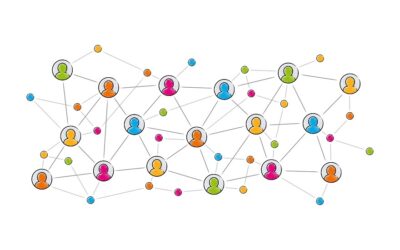Guest author Dr. Jill Mellen’s July article introduced the basics of developing an animal welfare program that addresses AZA’s standards. In this piece, Jill looks at welfare “from the outside in,” with a discussion of visitor perceptions and wraps it up with thoughts on some recent “hot topics” and a request for your input to add your experiences to these key points. Dr. Mellen worked at Disney’s Animal Kingdom as their Education & Science Director for almost 20 years, and is currently working to help zoos and aquariums address their animal welfare programs.
What are the Public’s/Visitors’ Perceptions of Animal Welfare?
As you’re developing your welfare process, it’s a good time to focus on visitors’ perceptions of animal welfare as well. Here’s what we know about our visitors in general:
-
The conservation mission does not resonate with all visitors. Many visitors focus first on the welfare of the individual animals and may not be ready to hear a conservation message because of their focus on perceived welfare issues. This perspective appears to be strongest among Millennials.
-
Studies show that spacious and natural-looking animal habitats and settings are more acceptable to visitors than exhibits that are “small,” or of more functional design (e.g., concrete or mesh, even if highly enriched).
-
A growing constituency questions the very premise of animals in “captivity.”
-
Overall favorability of zoos and aquariums has declined over the past 10 years (80% decline to 67% for zoos; 81% decline to 72% for aquariums).
-
“Large, smart animals”—specifically, dolphins, whales, elephants, apes, and large carnivores—are currently the species that receive the greatest attention from animal protection organizations.
-
While zoo staff perceive a resting lion as calm and relaxed, visitors often perceive that same lion as bored or unhappy.
Make sure that volunteers and staff have appropriate answers to visitors’ questions about an animal’s stereotypy or other behavioral issues. Visitors want to know that you’re aware of the issue, you care, and you’re addressing the issue. Your staff and volunteers need to feel comfortable addressing visitors’ concerns and share accurate, well-crafted messages.
A final note about our visitors (and us): Our visitors want to know if our animals are “happy.” We, as trained professionals, struggle with using the word “happy” in reference to our animals. We were warned about the sins of anthropomorphism (ascribing human characteristics to non-human animals) early in our careers and we seem inflexible in our ability to be a bit anthropomorphic. Can we get over this? Recent work by neuroscientist Dr. Jaak Panksepp identified seven emotions in mammals. His work suggests that similar emotions exist in other taxa as well. It’s likely that my dog is happy to see me when I get home. It’s likely that your elephant or your penguin is happy too. Our visitors can readily relate to the emotions they see in their pets. It may be useful for us to use these terms to describe our zoo and aquarium animals to our visitors. (And it’s ok. My dog really is happy and I have the science to back that statement!)
Food for Thought
I recently had the pleasure of being one of the instructors for the AZA course, Animal Welfare: Evidence Based Management, hosted by the Brookfield Zoo. Students and instructors had great discussions around several “hot topics”:
-
24/7 – Many of our terrestrial mammals are housed outdoors (“on exhibit”) during the zoo hours and then housed “off exhibit” in holding areas while the zoo is closed. Why do we do that? I’d challenge us to ask the question: “Do I need to lock those animals out during the day? Do I need to lock them in at night?” There may be safety and security reasons for doing this, but I’d challenge you to conduct a risk assessment on this practice. Recent studies on zoo elephants showed that giving elephants choice about spending their time indoors/outdoors had a positive effect on measures of welfare. Certainly, there’s a concern that the animals may not be visible to the visitors. You can measure that. Many times, animals’ visibility is not substantially affected by providing access to holding areas during the day. Try it for a month.
-
Speaking of terrestrial mammals, most of our welfare assessment tools were developed with these animals in mind. What about assessing the welfare of other animals (e.g., a Caribbean Reef Tank with multiple species)? This is a new hot topic and a focus of many aquariums. A cross section of aquarists recently met at Disney to begin addressing this issue. In fact, the best line from the Brookfield welfare course was an aquarist who said, “I know what angry coral smell like!”
In short, our animal welfare-related tasks include not only assessing and enhancing the animals’ welfare but also ensuring our visitors and the public understand that our vision is for all animals in our care to thrive.
Your Input Is Requested
What animal welfare-related issues are you and your staff working on right now? Related to animal welfare, what are your biggest successes? What are your biggest challenges? Please comment below –we have much to be gained from discussing this topic as a group and sharing experiences to ensure the highest level of animal welfare possible.
Resources
-
GUIDELINES FOR CREATING AN ANIMAL WELFARE ASSESSMENT PROCESS UNDER STANDARD 1.5.0 (3-page document created by AZA).
-
Mellor, D, Hunt, S, Gusset, M (eds). 2015. Caring for Wildlife: World Zoo & Aquarium Animal Welfare Strategy. Gland: WAZA Exec Office, 87pp.
-
San Diego Zoo Global Academy – two free online courses: Animal Welfare General and Animal Welfare Professional.
-
AZA Course Animal Welfare: Evidence Based Management. Offered annually at Brookfield Zoo.
-
Hekkers, J, Mellen, J, Ogden, J. 2017. Animals in professional care: How to understand and respond to animal welfare trends and issues. Developed for the International Association of Amusement Parks & Attractions. Contact IAAPA: animalinfo@iaapa.org (IAAPA members only).





